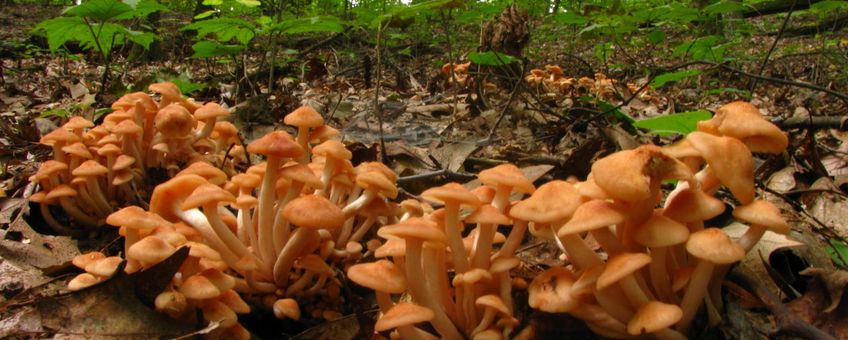
How biodiversity protects the weak
Netherlands Institute of Ecology (NIOO-KNAW)"It's one of the oldest questions in ecology", says an excited Tom Crowther: "How can such a huge diversity of species survive together on the planet? By providing a plausible mechanism to explain this phenomenon, our study helps to answer that question."
When two species compete for space and resources, according to classical ecology, the one with the most effective strategy will sooner or later exclude the other. But at the same time, ecosystems with a greater number of species and greater variety tend to be more robust overall.
That's because in a monoculture with just one species, even small changes could cause that species to die off completely. In a biodiverse community, on the other hand, chances are that at least one species - and not necessarily the strongest or the most competitive - will be able to adapt.
Rock, paper, scissors
 The article in Nature Ecology and Evolution explores one possible solution to this puzzle: if more than two species compete, it may produce a system of deadlocks and draws in which many of the potential rivals will be able to coexist indefinitely instead of killling each other.
The article in Nature Ecology and Evolution explores one possible solution to this puzzle: if more than two species compete, it may produce a system of deadlocks and draws in which many of the potential rivals will be able to coexist indefinitely instead of killling each other.
The authors refer to this as intransitive or 'rock-paper-scissors' competition: competing in pairs, there's always going to be a clear winner ("scissors beat paper", as in the childhood game) but when all competitors are included at once, none of them is stronger than the others combined. And so no single strategy can claim to be 'the' best overall.
The researchers found that not only does this promote species richness, it also allows highly dissimilar species with very different competitive strategies to coexist. These may even include weak species that would otherwise face almost certain exclusion.
Territorial carnivores
For their study, the researchers looked at interactions between 37 different types of wood-decay fungi. In pairs, these fungi are highly competitive: they protect their territory by growing toward each other, and overgrowing and decomposing the weaker of the two "like territorial carnivores".
The fungi most successful at overtaking single competitors, the researchers found, had many traits in common - e.g. the types of enzymes they produced and the ability to grow fast, an effective offensive strategy. But adding more competitors to the mix produced an entirely different picture.
Some fungi would, for instance, play defense and remain fixed in one location, developing a dense biomass that became difficult to overcome even for their best offensive competitors. It also left room for weaker species, which could now find a quiet corner to hide in, instead of being 'overrun' by the dominant competitor all the time.
Coral reefs
In the words of the researchers, it demonstrates that "biodiversity begets biodiversity": the more biodiversity there is to begin with, the better it can be maintained. This is particularly relevant where the species-richness of a community is at risk of being diminished not so much by internal competition as by human activity.
Take coral reefs, for instance. These are among the world's most threatened ecosystems, due to ocean acidification and human development. According to the authors of the paper, maintaining a rich diversity of species may itself be the most effective strategy for protecting the reefs against further biodiversity loss.
Text: NIOO-KNAW
Photos: Dan Molter, Wikimedia Commons (lead photo: Armillaria tabescens); NIOO-KNAW
